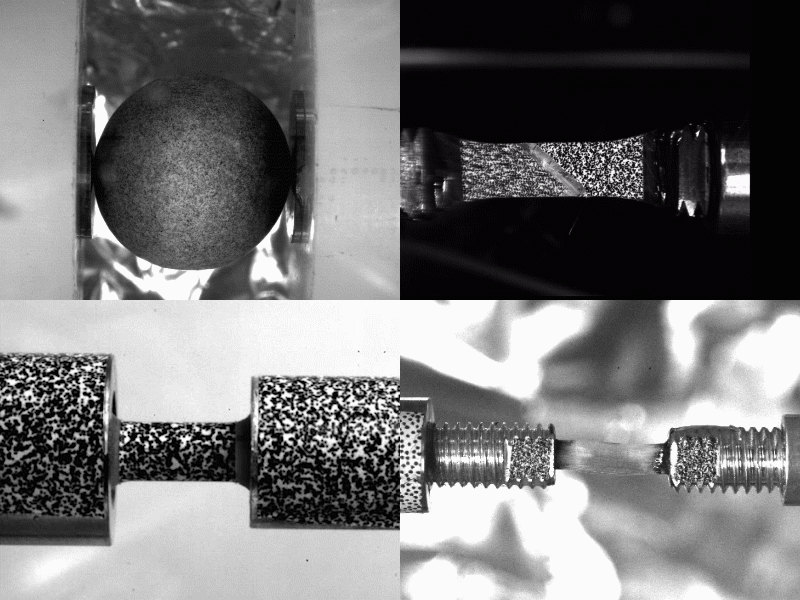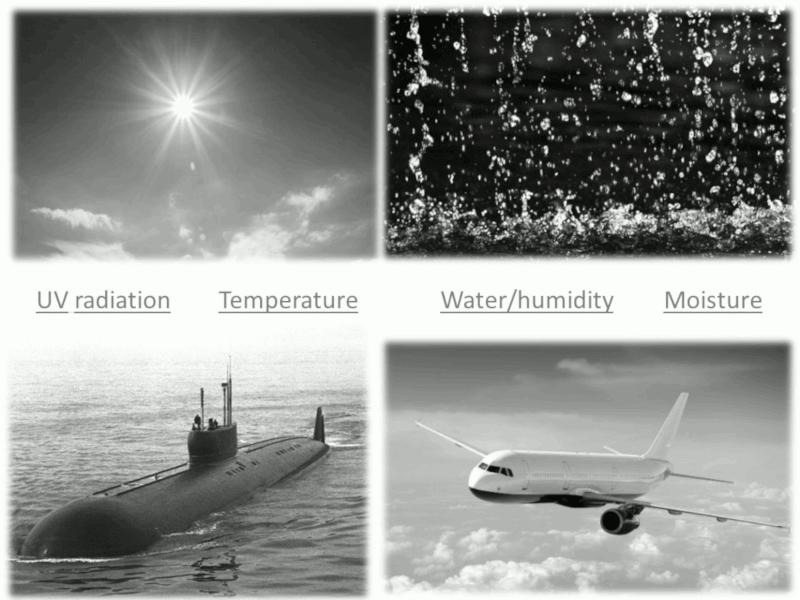My main research topics cover multi-scale experimentation and modelling of advanced composite and polymeric materials under dynamic loads and extreme working conditions such as humidity, cold/hot temperatures, and impact loading. The development of new and reliable manufacture and design tools for these materials, with applications on light, durable, shock-absorbing and corrosion-resistant structures, are paramount for a greener future.
In the following sections, I describe my current and recent work under 4 main streams. You are invited to look at my Google scholar profile for for an up-to-date list of my work.
Compression of fibre composites
Fibre composites have an unveiled potential in compression. Currently their compression strength is normally around only 50% their tensile strength. In NextCOMP, we are developing the next generation of fibre composites, with improved compression performance. Improvements in their matrix, fibres, interfaces and architecture can potentially prevent early instabilities that cause failure in compression.
Strain rate dependency of materials
The mechanical response of materials can be affected by how fast the loads are applied, how quick deformation occurs. For instance, polymers tend to be stronger at higher speeds of deformation than at quasi-static regime due to their viscoelastic nature. In my research, I investigate how different materials behave at quasi-static and at dynamic regimes. This information is later translated into mechanical models to help engineers to design real components.

Ageing of composite materials
My research is oriented to the study of composite materials for underwater and aerospace applications. During service conditions these composites will be subjected to humid environments. My current investigation aims to develop a constitutive model able to capture the effects of water uptake upon the strain rate dependent properties of composites. Previously, in my master thesis, I investigated the degradation of fracture toughness of an epoxy resin due to hygrothermal aging.

Development of novel experimental techniques
I like to be challenged by complex experimental setups. I have designed and built bespoke equipment (thermal chambers for in-situ testing) and experimental setups for micromechanical tests (micro compresion, tension and compact tension rigs). Currently, I am developing advanced in-situ tests for composites.
Other research interests
- Constitutive modelling
- Instrumentation (LabView, sensors, Arduino)
Publications
Journal Papers
Book Chapters
G. Quino, “Impact damage analysis of composite structures using digital image correlation,” in Non-destructive Testing of Impact Damage in Fiber-Reinforced Polymer Composites, Matthew Deans, 2024, pp. 69–86. doi: 10.1016/B978-0-443-14120-1.00003-0.
Conferences
G. Quino, J. Gargiuli, S. Pimenta, I. Hamerton, P. Robinson, R.S. Trask, Experimental characterisation of the dilation angle of polymers, in: 23rd International Conference on Composite Materials (ICCM23), Belfast, 2023.
B. Zhang, G. Quino, P. Robinson, R.S. Trask, Pure shear and compression-shear characterisation of polymer matrix for carbon fibre composites, in: 23rd International Conference on Composite Materials (ICCM23), Belfast, 2023.
G. Quino, M. Patni, S. Pimenta, P. Robinson, R.S. Trask, Plastic Poisson’s ratio of polymers: mechanical characterisation and its relevance in micromechanical modelling of composites, in: 18th Eur. Mech. Mater. Conf., Oxford, 2022.
G. Quino, P. Robinson, R.S. Trask, Design of a bending experiment for mechanical characterisation of pultruded rods under compression, 20th Eur. Conf. Compos. Mater. ECCM20. (2022).
L.R. Pickard, G. Quino, G. Allegri, M.R. Wisnom, R.S. Trask, Manufacturing of novel hierarchical hybridised composites, 5th Int. Symp. Autom. Compos. Manuf. (2022).
K.R. Ramakrishnan, G. Quino, Y. Chen, J. Hoffmann, N. Petrinic, Characterization of rate dependent compressive behaviour of epoxy resin and fibre reinforced composites, in: SEM Annu. Conf. Exp. Appl. Mech., 2021.
G. Quino, A. Pellegrino, N. Petrinic. “Composites in extreme environments: Effects of high strain rate, humidity and temperature”, in International Conference on Defence Technology, 26-29 October 2020. Nanjing, China.
G. Quino, V. L. Tagarielli, and N. Petrinic, “Towards a strain rate and water ageing sensitive constitutive modelling: Effects of strain rate and water uptake upon the properties of E-glass fibre reinforced epoxy,” in 5th International Conference on Mechanics of Composites, Lisbon, 2019.
G. Quino, V. L. Tagarielli, and N. Petrinic, “Water ageing effects upon the mechanical properties of E-glass fibre reinforced epoxy and its constituents,” in Engineering Mechanics Institute Conference, Pasadena, 2019.
G. Quino, F. De Cola, V. L. Tagarielli, and N. Petrinic, “Exploring the application of sound measurements to assess the structural integrity of fibre bundles,” in 25th International Conference - Fracture and Structural Integrity, Catania, 2019.
D. M. Thomson, G. Quino, H. Cui, B. Erice and N. Petrinic. “A study on fibre kinking criteria for unidirectional CFRPs under off-axis compression at quasi-static and dynamic loads”, in UKACM Conference, London, 2019.
G. Quino, V. L. Tagarielli, and N. Petrinic, “Glass fibre bundles in extreme environments: high strain rates and water exposure,” in 55th Annual Technical Meeting of the Society of Engineering Science, Madrid, 2018.
G. Quino, F. De Cola, K. Dragnevski, and N. Petrinic, “In-situ testing of sand grains and sound measurements,” in II Sinapsis, Berlin, 2017.
G. Quino, F. De Cola, K. Dragnevski, and N. Petrinic, “Quartz grain mechanics: in-situ testing and sound measurements,” in Microscience Microscopy Congress, Manchester, 2017.
G. Quino, V. L. Tagarielli, and N. Petrinic, “Degradation of composite materials under extreme conditions,” in I Sinapsis, Paris, 2016.
G. Quino, V. L. Tagarielli, and N. Petrinic, “Effects of strain rate and water ageing upon the properties of epoxy resin matrix for composites,” in ICCS18, Lisbon, 2015.